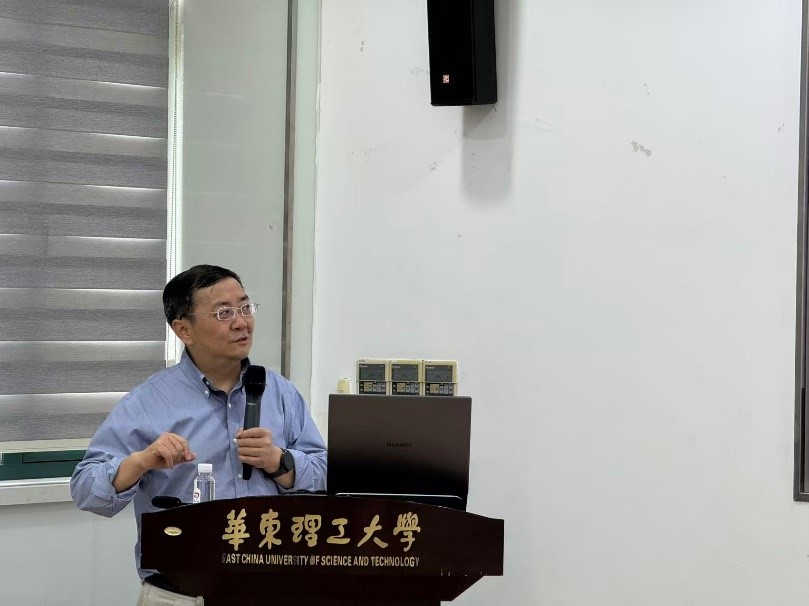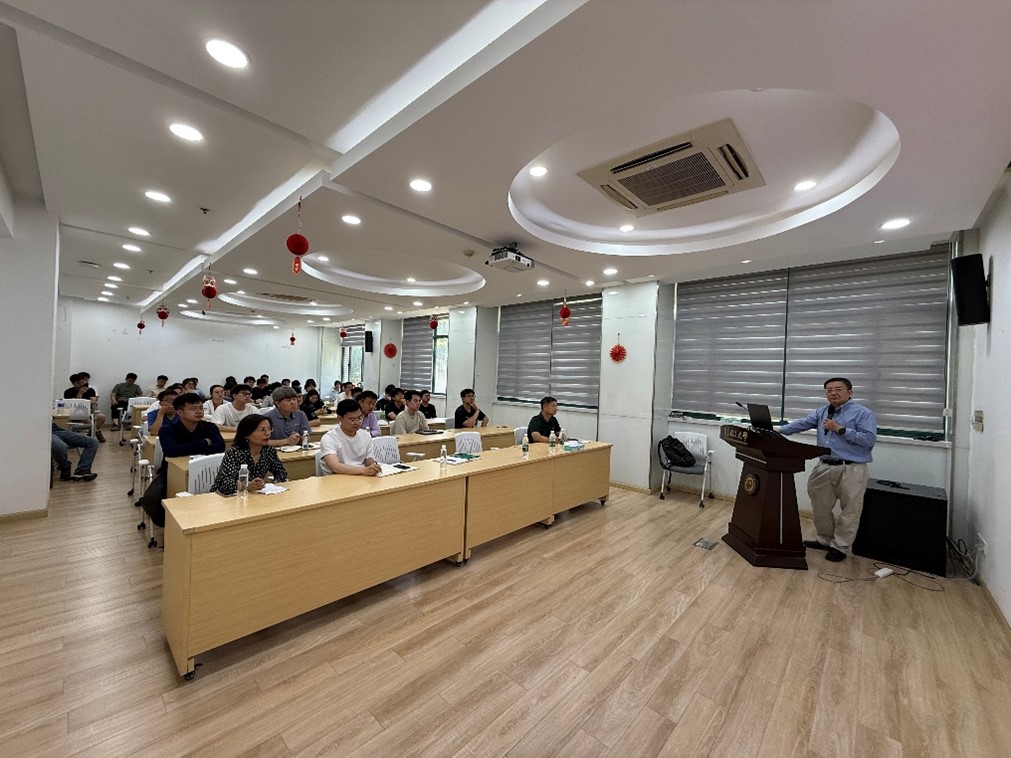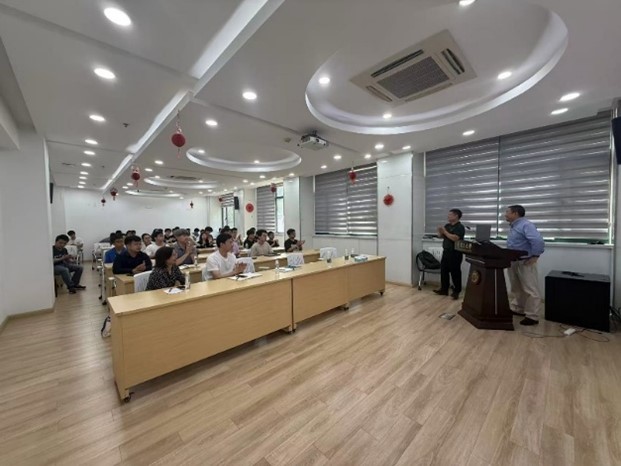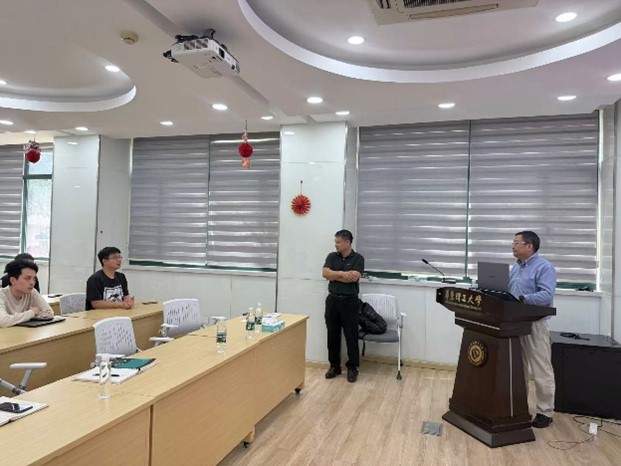On May 19, 2025, Dr. Nanjian Sun, Chief Expert on Non-metallic Materials at the Structural Platform of Huawei’s 2012 Laboratories, visited the East China University of Science and Technology (ECUST) at the invitation of the School of Chemical Engineering. He delivered an academic lecture titled “Insights into Materials R&D in Industry”, which was chaired by Professor Xuhong Guo and attended by faculty members and graduate students.

As technologies such as 5G communication, artificial intelligence, automotive connectivity, consumer electronics, and high-performance computing evolve rapidly, non-metallic materials—particularly high-performance polymers—are facing unprecedented performance and application challenges. Against this backdrop, Dr. Sun drew on over 20 years of industrial R&D experience at DuPont and Huawei to share insights on how to build effective synergies among materials science, engineering applications, and commercial demands. Centering his talk on the theme of industrial materials R&D, he outlined new approaches to material innovation and industrialization based on real-world engineering problems.
Dr. Sun emphasized the growing trend of interdisciplinary and systems-integrated research in materials technology. He noted that in addressing increasingly complex industrial problems, researchers must not only possess a solid scientific foundation but also a systems-level technical understanding and interdisciplinary awareness. He underscored that true innovation often arises from the convergence of different material systems and technological fields. While understanding the underlying science is crucial, the ability to propose constructive engineering hypotheses and solve practical problems is often even more critical.

Using real case studies from industrial R&D, Dr. Sun highlighted the importance of “black-box thinking” in engineering practice. He explained that many material challenges in early development stages cannot be fully explained by existing theories—a common disconnect between scientific principles and engineering applications. In such situations, researchers must rely on experience and logic to construct engineering hypotheses and validate them through experimentation. “Solving problems is itself a driver of scientific understanding,” he remarked. He encouraged young researchers to be bold in proposing ideas and hands-on in exploring them, to develop a deeper and more systematic cognitive framework through observation and experimentation.
|
|
|
During the subsequent discussion session, Dr. Sun engaged with the audience, addressing questions on success and failure in optimizing material properties and strategies for developing research capabilities. He advocated for prioritizing cognitive development over mere information collection and urged students to maintain good health and an open mindset, viewing research as a long-term “marathon.”

